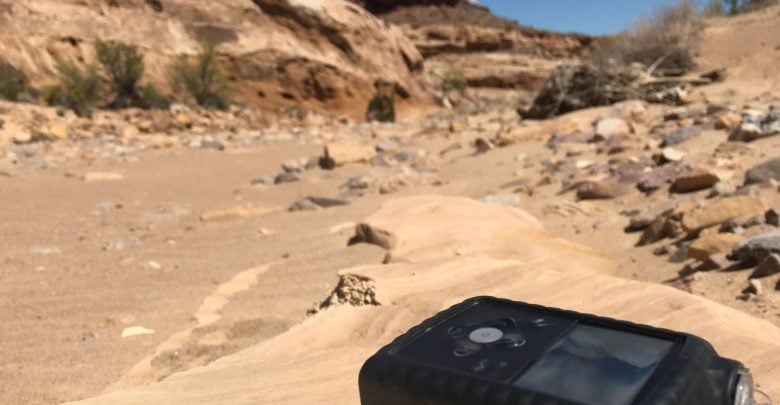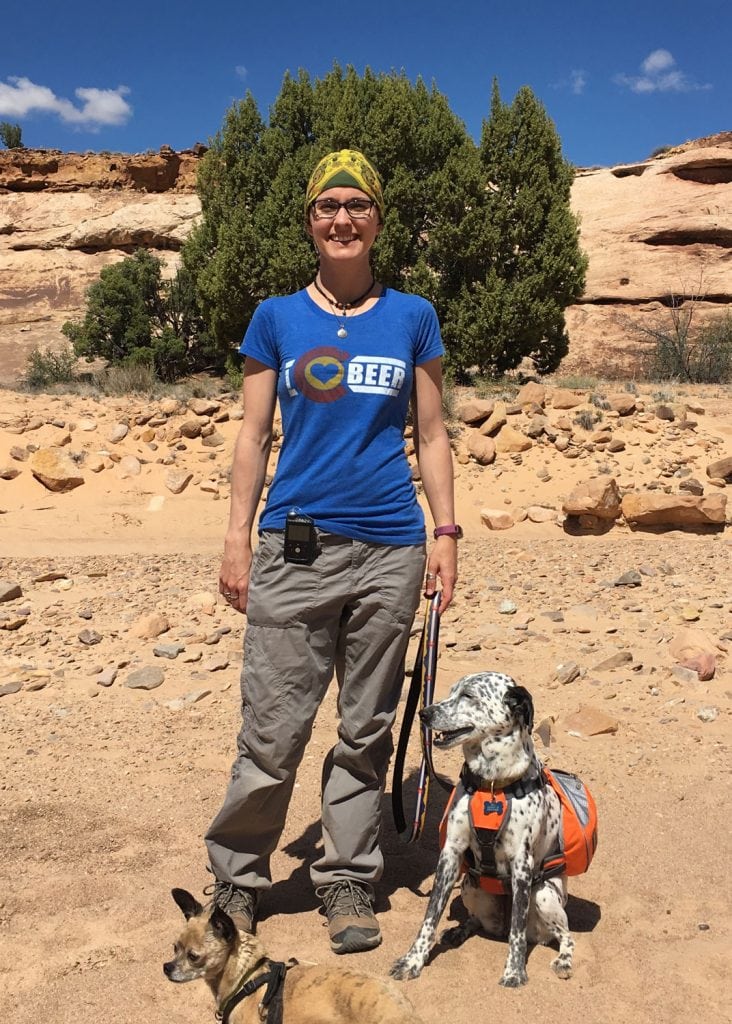

Busy Getting Ready; Too Busy
While dressing for our hike that morning, I caught a glimpse of my insulin pump set. It was only two days old, but already the edges of the tape were grimy and starting to curl. I remember thinking that I should pack an extra set in my backpack just in case. Somewhere between that moment, getting my 14-month-old daughter, two dogs and myself ready, that thought faded to the back of my mind. By the time I remembered, we were half an hour into a five-hour hike somewhere in the middle of the southern Utah desert.
Routine not Routine
I had slunk away from our small group of friends to relieve myself behind a tattered stand of desert brush. I attempted to not-so-gracefully pull down my pants while already squatting behind the inadequate coverage. I remembered a moment too late that my set was attached to my upper thigh. I felt the sting and looked down in horror.
I had ripped the set straight off my leg.
No no no no! Immediately, I remembered the extra set I was going to pack but never did. In fact, the only diabetes-related item I’d brought other than the MiniMed pump/CGM was my meter. I didn’t even have a spare syringe or extra insulin.
What do I do?
I spent the next five minutes trying to shove the tiny plastic cannula back into the microscopic hole in my thigh. When that didn’t work, I started considering my options. We could turn back and I could have a new set in within an hour. Or I could keep going. We had at least seven miles left, plus the thirty-minute drive back to camp. All the insulin left in my body would be used up within the next couple hours. That means I’d have at least two, probably three hours insulin-free. Maybe the activity of the coming hike would help. Or maybe all the strain and no insulin would mean I’d be spilling ketones by the end.
It was a tough decision.
Decision in Context
To those without diabetes (and maybe even some with), it probably seems ridiculous to even consider finishing the hike. Why put yourself at risk for something so silly? It’s just one hike, after all. But that’s the thing. It’s not just ONE hike. When you live with T1D, these situations happen ALL THE TIME. You forget to pack enough supplies (or any at all). You miss boluses. Or forget to eat. Your blood sugar goes high when you need it to be low. Or it tanks at the worst possible moment.
Only doing what you want when your diabetes complies would mean almost never doing what you want.
After a decade with this disease, I have discovered something: There is a fine line between putting yourself in danger and needlessly putting your life on hold. It’s important to distinguish between the two. Diabetes is a complex illness. And it changes constantly. No matter how good you are at dealing with it, it will always find a way to outsmart you.
And that’s how you end up in a situation like this: Stuck in the desert, miles from civilization, and having to choose between catering to your disease or living your life.
Luck Helps
Luckily for me, that day, the forgetfulness that got me into the situation also got me out. I had changed my set two days prior but had failed to ever actually remove the old site. I’d like to blame this on the fact that we had been camping for the last couple days. But it’s not the first time it’s happened. So maybe I’ll blame it on raising a toddler instead.
I disconnected the now useless site and plugged my tubing into the old site instead. I knew that the absorption rate at the old site would be poor. The spot had already started to calcify a little by the time I changed it. That was before it had stayed in there an extra two days! But the grueling hike ahead now worked in my favor. I had set a temp basal to 50% before the hike. With the new (very old) site now in use, I figured at best I would get 25% absorption. After some hurried and hazy math, I cranked the temp basal up to 200%.
With somewhere between very little and moderate amounts of insulin being pumped into my body, I felt confident enough to continue with the hike. As we set off down the red sand wash once again, my pump vibrated a notification against my leg. I looked down at the screen and couldn’t believe it. My CGM sensor had just expired. I actually laughed out loud.
With diabetes, you just have to learn to roll with the punches.
I finished the hike without incident. When we got back to the car I fished my meter out of my pack for the first time. I probably should have been checking my sugars along the way. But the scenery was so beautiful. The backdrop was so serene. I felt fine. And it was nice to just enjoy the simplicity of life, if only for a moment.
As if to applaud me for my steadfastness, the meter chimed a blood sugar reading of 117. I smiled to myself as I started up the car. A little ingenuity. A lot of stubbornness.
That’s how you LIVE with diabetes.